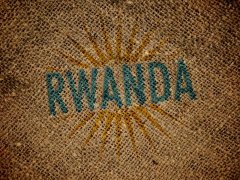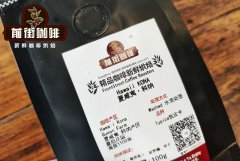What kind of coffee is grown in Laos? How to improve the cultivation of coffee in Laos?

Although many of us associate unexploded ordnance (the "remaining" bombs and shells caused by the conflict did not detonate) with the long-over war, this is a reality for the Lao people.
Laos is a landlocked country in Southeast Asia, bordering Vietnam, China, Cambodia, Thailand and Myanmar. Per capita is the country with the most bombs in history. As a result, almost half of the suitable farmland is completely unusable.
Laos is officially the Lao people's Democratic Republic, a narrow country with a population of more than 7 million. Its eastern and southern borders are on both sides of the infamous Ho Chi Minh Trail, the main supply route used by North Vietnamese troops during the Vietnam War.
As a result, between 1964 and 1973, American aircraft carried out more than 580000 bombing missions in Laos. The US military dropped 270 million bombs in Laos to sabotage supply operations in North Vietnam.
The bombing was carried out once a day, every eight minutes, for nine years. Today, there are believed to be about 80 million bombs that have never exploded in various parts of Laos. Many of these bombs split into smaller "bombs" in the air, hitting the ground without detonation and remaining unchanged as plants and trees grew around them.
These bombing missions were mainly organized by the Central Intelligence Agency and were not officially known to the public until 1969. Since then, they have been called "secret wars".
Today, the Lao economy is highly dependent on its land, especially mining and agriculture, including coffee. UXO poses a huge obstacle to both areas. This remains a huge humanitarian and socio-economic challenge that leads to chronic food and land security shortages.
Laos has been a coffee producer since French colonists established plantations there in the early 1900s. Production slowed again during the Vietnam War after the French left Vietnam. However, after the war, many small farmers moved back to abandoned large coffee plantations.
Over the next 45 years, Laos established a booming coffee industry, exporting to major consumer countries, including Germany and the United States. Today, it has become the third largest coffee producer in Southeast Asia after Vietnam and Indonesia.
Khamsai Inthavong is an agricultural value chain consultant in Laos. He told me that coffee supports more than 50000 agricultural families across the country. According to him, 95% of the coffee in Laos is produced in the Balavan plateau in the southern mountains.
But, he added: "Coffee farmers in Laos are one of the most dangerous jobs in the world."

Coffee is grown at high altitudes, which makes areas such as the Bravin Plateau ideal for producers. However, these mountains make up most of the border with Laos, which is often crossed by North Vietnamese troops as part of the Ho Chi Minh Trail.
During the Vietnam War, more than 2 million cluster bombs were dropped on suspected Vietnamese army hideouts near the border.
Not surprisingly, this has actually damaged the coffee industry in Laos. Although it has been restored for decades, UXO limits the safe use of these rich agricultural land.
"it is very difficult for us to expand coffee production," said the head of Dak Cheung, a village in Sekong province in southeastern Laos. This land must be cleared by bomb clearance agencies, but we are too far from the main village. They won't come out and clean up the place. "
Michael Wood, founder of fi-lan'thro-pe, an organization that works with coffee farmers in Laos and Vietnam, added: "for many poor coffee farmers in Laos, they have no choice but to risk their lives on [affected] land.
UXO can limit (usually use) agricultural land to grow, diversify and expand the expansion of coffee communities where crops are grown. It can prevent safe access to roads, collect firewood, [obtain] safe sources of drinking water, and even have no access to markets and medical centres. "
Unexploded ordnance in Laos affected 25 per cent of villages in 15 of the country's 18 provinces. More than 300 people die every year. It is estimated that 12000 people have been killed or injured by unexploded ordnance since 1973.
Bernard Franck of the United States Agency for International Development has worked with UXO and landmine survivors in Laos, Cambodia, Angola and Sri Lanka for 30 years. He noted that the impact of unexploded ordnance accidents was particularly devastating in rural areas.
"in remote communities, those people still do not have the physical rehabilitation, auxiliary products and psychosocial support needed to overcome unexploded ordnance accidents," Bernard explained.

He added that victims of unexploded ordnance accidents suffered "long-term chronic pain and psychological trauma, including anxiety, stress, depression and post-traumatic stress disorder".
Unexploded ordnance also has a great impact on women. In Laos, men and boys are the majority of victims, while women and girls directly injured by unexploded ordnance are more likely to face discrimination, isolation and stigmatization because of their disabilities.
In addition, Bernard explained that women are also indirectly affected by unexploded ordnance accidents. "in cases where male family members are seriously injured, women and girls will bear the additional burden of taking care of the family and face the further threat of unexploded ordnance, as they bear most of the responsibility for agricultural labour," he said.
"widows in particular have access to coffee land, land rights and unequal control over economic and agricultural resources."
For many, the obvious solution for UXO is to clear the bomb. But it's not that simple.
The Mines Advisory Group (MAG) is a British charity that tracks and destroys mines, cluster munitions and unexploded bombs around the world. They have been working in Laos since 1994.
The removal of unexploded ordnance is a structured but painfully slow process that poses a great risk to those who do so. Manual "demining" includes the use of metal detectors and various mining tools to inspect minefield meters meter by meter. Every day, approximately 3000 people nationwide investigate and clear unexploded ordnance at an estimated cost of $3000 per hectare.
Sarah Goring is a planning officer for MAG, Laos. "during the rainy season, difficult terrain and dense forests further hinder access," she said.
"the task of demining the whole country will take quite a long time, and although [the number] is decreasing, casualties continue to occur."
The Lao Government has indicated that it intends to remove unexploded ordnance from all priority farmland by the end of 2020. However, so far, only about 25% of the affected population has benefited from sweeping the floor and removing bombs.
In addition, there are other unforeseen problems. For example, in July 2018, a hydroelectric dam broke in Attapeu, a coffee-growing region in southern Laos, near the Cambodian border. This caused 5 billion cubic meters of water to gush out from the area.
This will unearth a completely unknown number of unexploded explosives and redistribute them to previously cleared areas. The whereabouts of the mines are uncertain and have effectively "reset" the progress of mine clearance in most parts of the region.
In the 1950s, most coffee on the Bolaven plateau was specifically replaced by robusta and Arabica coffee, resulting in higher yield and plant adaptability than crop quality. However, since 2014, the Lao Government has promoted the widespread cultivation of high-value Arabica coffee varieties to meet the global demand for specialty coffee.

Production has been expanded to the mountains of the central and northern provinces of the country, and some forest areas have been cleared to grow coffee. But these fertile areas are also the heaviest places to be bombed.
In these areas, many coffee farms are so remote that it is difficult to carry out proper unexploded ordnance clearance. There is no other choice, and some Laotian farmers give it a try.
When the accident occurred, Michael said that "access roads" and "lack of telephone contact" made it difficult for "unexploded ordnance casualties to obtain medical support."
"the main communities at risk are new coffee growers," he explained. " "many older farms have been cleared by unexploded ordnance, but in the least developed areas they are the poorest and they are most at risk of loss of life associated with unexploded ordnance."
Fortunately, despite the challenges faced by many of these farmers, there are many ongoing development plans to support the expansion of the country's coffee sector to improve the lives of farmers.
Unexploded ordnance clearance in Laos continues to be supported and funded by numerous international organizations in Australia, New Zealand, Canada, the European Union, Norway, South Korea and the United States.
In 2016, President Obama visited Laos; he was the first US president to do so. During his visit, he publicly acknowledged the "secret war" of the Lao people and the subsequent unexploded ordnance and apologized to for causing so much sadness and destruction. He pledged $90 million in aid to Laos to help them eliminate UXo and provide further support.
"once charities like MAG clear unexploded land, communities can live and farm without fear," Sarah said. They are free to build livelihoods that support their families and help them lift them out of poverty. "
For Laotian coffee, the hope is that farmers can finally shake off the effects of the war that ended 45 years ago and move towards secure economic growth.
What can consumers do while all these unexploded ordnance clearance programs continue? Well, by drinking coffee from untreated coffee areas, we acknowledge and participate in this issue, while always supporting farmers who now grow coffee on safe, clean land.
Important Notice :
前街咖啡 FrontStreet Coffee has moved to new addredd:
FrontStreet Coffee Address: 315,Donghua East Road,GuangZhou
Tel:020 38364473
- Prev

How to brew Rwandan Coffee in the History of Rwandan Coffee cultivation & flavor characteristics of Rwandan Coffee
Professional coffee knowledge exchange more coffee bean information please follow the coffee workshop (Wechat official account cafe_style) Rwanda, a history of rebirth after robbery, using coffee to protect the hopes of many people. Rwanda has unique conditions for growing Arabica coffee, fertile volcanic soil, sufficient rainfall and suitable temperature all year round, all of which make the coffee produced here taste.
- Next

Will the weather affect the flavor of the coffee during processing? What is the process of coffee processing?
As discussions about climate change become mainstream in the media in 2019, it is well known that global warming is no longer a distant future. Rising sea levels and rising temperatures have affected many aspects of human life. Agriculture is one of the most changing areas, and agriculture itself is also an important factor in greenhouse gas emissions. This will have a significant impact on coffee production.
Related
- Beginners will see the "Coffee pull flower" guide!
- What is the difference between ice blog purified milk and ordinary milk coffee?
- Why is the Philippines the largest producer of crops in Liberia?
- For coffee extraction, should the fine powder be retained?
- How does extracted espresso fill pressed powder? How much strength does it take to press the powder?
- How to make jasmine cold extract coffee? Is the jasmine + latte good?
- Will this little toy really make the coffee taste better? How does Lily Drip affect coffee extraction?
- Will the action of slapping the filter cup also affect coffee extraction?
- What's the difference between powder-to-water ratio and powder-to-liquid ratio?
- What is the Ethiopian local species? What does it have to do with Heirloom native species?

